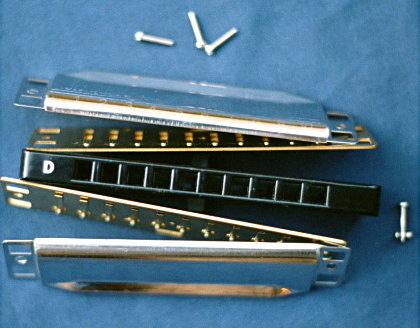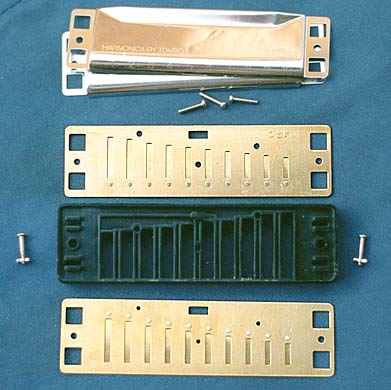Friday, November 27, 2009
The practice schedule for December 2009
Here is the schedule for next month (December) practice. Because our various tests are around the corner, we just booked a few days, including 2 days of the 2-week school holiday. We need practice because in Dec 13th we'll have a performance. And in January, we'll also have performance due to "open house". So please do practice at home---even 10 or 15 minutes daily will make a difference. Thank you for your effort
If there is any change, I'll update you.
Have a nice weekend
Date Time Room
3 Dec 2009 (Thur) 6-8 pm E 314
8 Dec 2009 (Tues) 6-8 pm E314
10 Dec 2009 (Thur) 6-8 pm E314
29 Dec 2009 (Tues) 6-8 pm E314
31 Dec 2009 (Thur) 6-8 pm E314
Tuesday, November 24, 2009
A Message
Hi everyone , good job for today's lunchtime performance at NYP Library Cafe ! ^^
Thanks to everyone for spending effort for it...
Wishing everyone all the best for the upcoming 13th December Performance !
Saturday, November 21, 2009
Clean Your Harmonica 【with a roughly Chinese translation】
How often should I clean my harmonica?- Maybe never, maybe frequently, this is entirely up to you. Cleaning is not always a good thing. If you are over-zealous in your attempts, you could cause more problems than you solve. Many harmonicas will wear out from use before they ever actually need a cleaning.
When should I clean my harmonica?- If it bothers you, you should clean it. If you think that cleaning could help prevent future problems, then you should clean it. If someone else plays your harmonica, you should probably clean it. If you pickup a used harmonica, you should definitely clean it (for health reasons, we don't recommend buying or playing used harmonicas). If it has been sitting somewhere for months or years, you may want to clean it.
Is it possible to completely sterilize my harmonica?- The answer comes from one of our friends in the medical industry:"It is true that Hydrogen Peroxide will not completely sterilize a harmonica. Unfortunately, true sterilization is very difficult. In the medical office, we use an autoclave (combination of high temperature and high pressure), which is very reliable, but expensive and not available to the public. In addition, autoclave conditions can damage many materials -- I have my doubts that a harmonica would survive. Gas sterilization is used as an alternative for medical instruments such as arthroscopes, etc. which contain latex, plastic, or other materials which would not survive in an autoclave. This is also not available to the public. The general public has access to soap and water, rubbing alcohol, and hydrogen peroxide. Of these, alcohol is probably the best disinfectant, but again this depends on the contact time, and not all organisms can be killed with this. Protected areas (i.e. under a reed plate, etc) may harbor organisms and the alcohol may not penetrate there, limiting its effectiveness. Alcohol also needs to be rinsed off very well. Peroxide is effective for certain organisms, but as I recall, its action spectrum is not as broad as alcohol. I do not know the effects of alcohol or peroxide on the long-term viability of the harmonica itself."
Cleaning a chromatic vs. diatonic harmonica- If your harmonica has a button on the side and white plastic valves over the reeds (which you would see when you take off the metal cover plates), it is a chromatic harmonica and you need to be careful not to disturb those white plastic wind saver valves. By the way, NEVER SOAK A CHROMATIC HARMONICA OR RUN WATER THROUGH IT, it ruins it. Although some of the cleaning instruction here will apply to chromatic harmonica, you are better off following the manufacturers directions or picking up addtional cleaning and repair instruction specifically for chromatics. Cleaning Your Harmonica
Cleaning without taking the harmonica apart- If your diatonic harmonica has a plastic comb (versus a wood or metal comb), you can do a quick cleaning by running luke warm water through it and then rapping it firmly (mouthpiece side down) against your leg or palm to knock out the excess water. Repeat 2 or 3 times being careful to knock out all the water. Lightly playing big full mouth chords (4 or 5 notes) throughout the harmonica will also help clear out the excess moisture. For a light cleaning, this may be all you need.

For a more thorough cleaning, disassemble cover plates, reed plates, and comb.- Use the appropriate screw driver for your brand of harmonica (flat head or phillips). Fnd a safe place to temporarily store the little screws and nuts that you will get from your disassembly. If they fall to the floor they may disappear forever.
Disassemble cover plates, reed plates, and comb.
Cleaning the comb- You may clean the plastic comb with warm water, soap, and an old tooth brush -- rinse completely. If your comb is made of wood, skip the water and soap and merely rub it down with the old toothbrush. If your comb is metal, be sure to dry it thoroughly upon completion ot avoid rust and tarnish.
Cleaning the cover plates- You may clean the plastic comb with warm water, soap, and an old tooth brush. Rinse well. If your comb is made of wood, skip the water and soap and merely rub it down with the old toothbrush.
Using metal cleaner or brass polish on the cover plates- Not recommended. It is very difficult to completely remove the chemical smell even after a thorough wash and rinse. The tarnishing of the cover plates won't hurt anything including the sound. In fact, some might take it as a sign of an experienced player.
Disassembled cover plates, reed plates, screws, and comb.
Cleaning the reed plates- You may clean the reed plates with warm water and soap and your fingers. Rinse well. You should not wash the reed plates with an old toothbrush. The bristles could get caught on a reed and do damage. Please note that some brands and models of harmonicas have reed rivets that are made of a non-rusting material, others do not. It is possible that without thorough drying, the rivets may begin to rust over time. Therefore, dry as completely as possible before re-assembly.
Cleaning the reed plates while attached to the comb- Very carefully take the harmonica apart down to the comb and attached reed plates. Then take Q-tips and Hydrogen Peroxide Solution (found at any drug store and most supermarkets) and clean the areas that seem to need cleaning. The Hydrogen Peroxide will sanitize, clean, disinfect, and is perfectly safe. Focus special attention on the areas where you will be putting your mouth. Be very careful not to leave any of the extra fuzz from the Q-tips, especially around the reeds (the little thin brass things with a rivet at one end). If you can find some Q-tip type swabs that are not made of cotton but made of some material that doesn't leave lint, that would be even better. This method when carefully applied will also work with chromatic harmonicas. Re-assembling Your Harmonica
Re-attaching the reed plates back on the comb- Use your thumb and forefinger to squeze and slide the plates and comb around until the plates feel "seated" properly within the comb. While securely holding the "seated" reed plates in place, replace the reed plate screws. Do not over-tighten these screws, it doesn't help. Over-tightening tends to cause a warping in the screw areas and increase air leakage. Loose is better than tight. Remember, these plates will also be held securely in place with the final cover plate screws.

Replace the cover plates, not too tight or loose- As with the reed plate screws, do not over-tighten the cover plate screws. Be sure to check that the cover plates are aligned correctly on top of the reed plates before final tightening.
Should one cover plate screw be tighter than the other?- Not necessarily, but you may find that the screw located on the "high end" can cause the harmonica to feel slightly more airtight if it is a bit tighter than the "low end" screw. Sometimes this helps, sometimes not.
我多频繁应该清洗我的口琴?-可能从未,可能常常地,这完全地是由您决定。 清洁总是不是一件好事。 如果您是过分热忱的在您的尝试,您比您解决可能造成更多问题。 在他们实际上需要清洁之前,许多口琴从用途将用完。
我何时应该清洗我的口琴?-,如果它打扰您,您应该清洗它。 如果您认为清洁可能帮助防止未来问题,则您应该清洗它。 如果别人演奏您的口琴,您应该大概清洗它。 如果您提取一只使用的口琴,您应该明确地清洗它(因健康上的原因,我们不推荐买或演奏使用的口琴)。 如果它几个月或几年来坐某处,您可以想要清洗它。
完全地消毒我的口琴是否是可能的?-答复来自我们的一个医学工业的朋友:“是真实的过氧化氢不会完全地将消毒口琴。 不幸地,真实的绝育是非常困难的。 在医疗办公室,我们使用一台压热器(组合的高温和高压),是非常可靠的,但是昂贵和不可利用对公众。 另外,压热器情况可能损坏许多材料 -- 我有口琴将生存的我的疑义。 气体绝育使用作为选择为医疗仪器例如包含乳汁、塑料,或者其他材料在压热器不会生存的关节镜等等。 这也不供给公众。 公众得以进入用肥皂擦洗的和水、外用酒精和过氧化氢。 这些,酒精大概是最佳的杀菌剂,但是这再取决于联络时间,并且不是所有的有机体可以杀害与此。 被保护区(即在芦苇板材等等之下)也许怀有有机体和酒精可能不击穿那里,限制它的有效率。 酒精也需要很好漂净。 过氧化物为某些有机体是有效的,但是,当我召回,它的行动光谱不是一样宽广的象酒精。 我不了解酒精或过氧化物对口琴的长期生活能力的作用。“
清洗一色彩对全音阶口琴,如果您的口琴有在边的一个按钮和在的白色塑料阀门您会看见的芦苇(您什么时候离开金属盖板),它是一只色彩口琴,并且您需要小心不干扰那些白色塑料风救星阀门。 顺便说一句,不要浸泡一只色彩口琴否则奔跑水通过它,它破坏它。 虽然某些这里清洁指示将适用于色彩口琴,您还好些跟随制造商方向或拾起另外的清洁并且明确地修理指示chromatics的。 清洗您的口琴
清洗,无需拆散口琴,如果您的全音阶口琴有塑料梳子(对木头或金属梳子),您能通过信息业跑卢克温暖的水通过它然后敲击做快的清洁(下来喉舌边)反对您的腿或棕榈击倒过量水。 重复2或3的次小心击倒所有水。 轻演奏大充分的嘴弦(4或5笔记)在口琴中清楚地也将帮助剩余湿气。 对于轻的清洁,这也许是您需要的所有。
对于更加详尽的清洁,拆卸盖板、芦苇板材和梳子。-为口琴您的品牌使用适当的螺丝刀(平的头或菲利普)。 Fnd临时地存放您从您的拆卸将得到的小的螺丝和坚果的一个安全的地方。 如果他们落对地板他们也许永远消失。
拆卸盖板、芦苇板材和梳子。
清洗梳子您可以清洗塑料梳子与温暖的水、肥皂和一把老牙刷 -- 完全冲洗。 如果您的梳子由木头制成,跳水和肥皂和用老牙刷仅仅摩擦它下来。 如果您的梳子是金属,请务必烘干它在完成ot十分地避免铁锈和污名。
清洗盖板您可以清洗塑料梳子与温暖的水、肥皂和一把老牙刷。 冲洗井。 如果您的梳子由木头制成,跳水和肥皂和用老牙刷仅仅摩擦它下来。
使用金属擦净剂或在没建议使用的盖板的黄铜擦亮剂。 在周到洗涤和冲洗以后完全地去除化工气味是非常难的。 使失去光泽盖板不会损害什么包括声音。 实际上,一些也许采取它作为一个老练的球员的标志。
被拆卸的盖板、芦苇板材、螺丝和梳子。
清洗芦苇板材您可以用温暖的水清洗芦苇板材和肥皂和您的手指。 冲洗井。 您不应该洗涤与一把老牙刷的芦苇板材。 刺毛在芦苇能被逮住,并且损坏。 请注意:口琴有些品牌和模型有被做非生锈的材料的芦苇铆钉,其他不。 是可能的,不用周到干燥,铆钉也许开始随着时间的推移生锈。 所以,烘干一样完全地尽可能在重新组装之前。
清洗芦苇板材,当附加梳子非常时小心地中断口琴分开到梳子和附上芦苇板材。 然后采取棉条和过氧化氢解答(被找到在任何药店和多数超级市场)并且清洗似乎需要清洗的区域。 过氧化氢将消毒,清洗,消毒,并且是完全安全的。 集中特别留意于您投入您的嘴的区域。 非常小心不特别是在芦苇(与一个铆钉的少许稀薄的黄铜事附近留下其中任一根从棉条的额外绒毛,在一个末端)。 如果您能找到没有由棉花制成,而是由一些材料制成不离开棉绒的一些棉条类型拖把,那是更好的。 这个方法,当小心地应用也与色彩口琴一起使用。 重新召集您的口琴
再依附芦苇板材在梳子用途您的拇指和食指对squeze和滑板材和梳子,直到板材感觉“适当地安装”在梳子之内。 当安全对负“供以座位”到位时芦苇的板材,替换芦苇板材螺丝。 不要过分拧紧这些螺丝,它不帮助。 过分拧紧在螺丝区域倾向于导致翘曲和增加气漏。 宽松比紧紧好。 记住,这些板材将安全地也对负到位与最后的盖板螺丝。
不太紧紧替换盖板,或疏松与芦苇板材螺丝,不要过分拧紧盖板螺丝。 请务必检查盖板恰当地被排列在最后拉紧之前的芦苇板材顶部。
一个盖板螺丝比其他应该是紧?-不一定,但是您可以发现位于“高端”的螺丝可能造成口琴感到有一点更加不漏气,如果它比“低价的”螺丝有点儿紧。 有时这帮助,有时没有。
口琴分类介绍【 Chinese version】
合奏类口琴:和弦口琴、低音口琴、铜角口琴
其他类口琴:迷你口琴、项链口琴、儿童口琴、糖果口琴
一、复音口琴(tremolo harmonica):这是在亚洲较为普遍的口琴,每个单音都有上下两孔。一般的复音口琴,其上排簧片和下排簧片的音高(pitch)会被调整至有些微差距,当两个簧片一起发声时就会产生微妙的共鸣,类似震音,所以又称震音口琴。虽然在一支复音口琴上面没有升降半音的设计,但可以同时握住两支音高相差半音的口琴来吹出半音。
1。复音口琴(tremolo harmonica)这是最常用的复音口琴,单音双音簧发声,音色清亮,易吹奏,已经有不少著名大师为这种复音口琴创出独有的伴奏技巧,其和声效果可以丰富起单调的旋律,独奏甚至可以媲美一支小型乐队,适合吹奏民谣(folk)、乡村(country)等以东方风格为主的音乐,也可以演奏流行(pop)、古典(classic)乐曲。
2。重音口琴(octave harmonica)这是用来合奏或作为某些曲子专门独奏的复音口琴,上下两排的音阶相差八度,与常用复音口琴的吹奏技巧——八度和音效果相同,共鸣音色绝佳。
3。回音/回声口琴(echo harmonica)这是用来合奏或作为某些曲子专门独奏的复音口琴,上下盖板从琴背后方延伸整个连为一体包住琴格的设计增加了回声效果,类似震音或回响,音色优美独特。这些复音口琴大多是胶制琴格,木制琴格通常是较胶制琴格共鸣效果更佳,音色更温暖和谐。罕见的也有全铜制的复音口琴。不过全银制造或者使用黑檀木等高级材质制造的复音口琴尚未面世。购琴须知:购买复音口琴的朋友请注意口琴的调性,有C、D、E、F、G、A、B这7个常用大调和C#、D#、F#、G#、A#这5个补充调,套装的复音口琴就是指这12个大调。另有自然小调及和声小调各12个调性因不常见可另外向厂家订购。建议初学者选购一支C调复音口琴,经济能力许可的话就再购一支C#调复音口琴,用以吹奏升降半音,以及作为日后学习移调演奏的必要装备。
二、半音阶口琴(chromatic harmonica ):这是近年新兴起的口琴,由传统的口琴改良而来,利用一个巧妙的按键可以在一支口琴上面吹奏出升降半音,若未按压按键吹奏就相当于钢琴的白键,按压下按键后立刻升高半音,相当于黑键。国际上出现过不少非常知名的半音阶口琴演奏大师,他们的演奏受到音乐家们的一致肯定与赞扬,足见半音阶口琴已经列入正统乐器之林。半音阶口琴近年推广迅速,因为其音域可达4个八度,而且便于移调或转调,所以经常运用于口琴合奏和多重奏中。
半音阶口琴类的常用规格可归纳为三种:a.10孔40音、12孔48音、14孔56音、16孔64音半音阶口琴这些是标准型号的半音阶口琴,单音簧发声,琴格每一孔都同时有吹吸四个音存在,除高音部的几个音外,每个簧片都盖有一个胶膜阀门(俗称胶片)用以防止漏气。常见初学者较难吹奏其低音部。半音阶口琴的音色纯正而圆浑厚实,尤其适合吹奏古典风格和旋律优美的乐曲,亦可以吹奏流行音乐。另有某些型号特别适合演奏出爵士(jazz)风格的音乐。b.24孔48音半音阶口琴这是目前中国制造的特有型号,国内厂商生产半音阶口琴的初期,为了减小因胶片品质不良而引起的漏气问题,也为了节省成本,就发明了这种没有胶片的半音阶口琴,同样单音簧发声,但琴格每一孔只有吹吸两个音存在。特别要指出,这种口琴与标准的10、12、16孔等半音阶口琴比较起来,品质差很远,吹嘴和按键部分都是塑料制造的,音色跟一般儿童用的单音口琴差不多,漏气情况严重,但也可用作小朋友的随身玩伴。c.特殊半音阶口琴这些琴外型酷似复音口琴,有上下两排,上排比下排高半音,吹奏上排的作用等同压下普通半音阶口琴的按键,音色清亮纯正,外型美观,用作教学或自娱自乐都不错。
半音阶口琴有的是胶制琴格,有的是木制琴格,各具特色。少数也有铝制琴格或全银制造的半音阶口琴,甚至有使用黑檀木制造琴格的口琴,黑檀木口琴音色温润柔和,共鸣效果绝佳。购琴须知:购买半音阶口琴的朋友请注意口琴的调性,有C、D、E、F、G、A、B这7个常用大调和C#、D#、F#、G#、A#这5个补充调。半音阶口琴可以视为将两把相差半音的口琴做在一起,例如C大调同时具备C#调所有音阶,所以常见大部分厂家只生产C大调,其他调性如D、E、F、G、A、B等大调只有少数型号有提供。建议初学者选购一支C调半音阶口琴,毋须再补购C#调半音阶口琴,只要学会移调,就可以演奏任何调性的乐曲,真正“一琴闯天下”。
三、十孔/全音阶口琴(10-holes harmonica/diatonic harmonica)十孔口琴是这种口琴的通称,又可以称为民谣/蓝调口琴(blues harp),有时也称作全音阶口琴。这种口琴在欧美极为流行,当地有不少人认为它是口琴爱好者中最大的族群。十孔口琴体积很小,携带容易,其音色具有相当的模仿能力,优美中带点忧郁,因此适合蓝调(blues)、摇滚(rock)、乡村(country)、民谣(folk)、爵士(jazz)等风格,也是动画、影视娱乐、流行曲配乐最常用的口琴。有些人可以一边弹吉他,一边吹奏十孔口琴,正是夹band(组乐队)的首选!以十孔口琴特有的音阶排列来区分种类:1、瑞希特尔系统(richeter system)这是最标准音阶排列的十孔口琴,估计全世界99%的热爱十孔口琴的人士都选用它,单音簧发声,每孔两个音,共20个,约有3个八度。一般十孔口琴有一个共通的特性,就是低音部没有F(Fa)和A(La),高音部没有B(Si),这是为了和声上的考量而特意设计的。吹奏者依然可以运用压音(banding)技术来吹奏出欠缺的音阶。关于这样的音阶设计其实要追溯到1825年一位波希米亚的乐器工匠richter,改良并创新出现这种音阶排列系统。吹气时发出1、3、5一组音为C和弦,而吸气时发出2、4、6或5、7、2、4一组音构成G7和弦,对于演奏当时的民谣音乐非常适合,尤其富有蓝调色彩。
2、其他音阶排列由于richter system的音阶排列低音部没有F(Fa)和A(La),对于演奏东方民谣或流行音乐等等时常采用低音部F和A的旋律,会有较大影响,就算如何苦练压音技术,其所造出的音色也似乎不可能媲美不压音时的纯正音色。因此市面上有一些品牌的型号加上了低音部的F和A,但采用这种“着重旋律”的音阶排列并不常见,所以进阶使用者通常都会依照自己的喜好和需要自行改装口琴。由于这些另类的音阶排列的名称太多,在此不一一列举。多数十孔口琴以胶制琴格为主,也有木制琴格和铝制琴格的十孔口琴,音色各自精彩。有些罕见的十孔口琴更是用银制盖板的,甚至有人自行研制用高级木材来造整支十孔口琴。购琴须知:购买十孔口琴的朋友请注意口琴的调性,有C、D、E、F、G、A、B这7个常用大调和C#、D#、F#、G#、A#这5个补充调,套装的复音口琴就是指这12个大调。还有HG(比G调高八度)、LF(比F调低八度)等特殊调性,自然小调及和声小调各12个调性因不常见可另外向厂家订购。建议初学者购买一支品质良好 ,压音清晰容易的C调十孔口琴作学习之用,之后再考虑补购其他调性的十孔口琴。特别提醒初学者,口琴品质太差,会影响口琴压音效果,更有可能完全不能压音,初学者就算苦练下去也只会浪费时间,所以最好选购有信心保证的品牌。
四、合奏类口琴(orchestra harmonica)口琴演奏形态很多,除了独奏以外,也包含二、三、四、五重奏,及大小合奏,旋律的主声部上除了由独奏类的口琴担纲外,还有和弦部、对位和弦及低音部,必须由一些特殊制造的口琴来演奏,如此才能层次分明,达到更高的演奏水平。近年不少由这些口琴组成的乐团会招揽半音阶口琴的好手进去兼任,有兴趣加入半音阶、合奏行列的朋友可先从半音阶口琴学起,更能事半功倍。
1、和弦口琴(chord harmonica)顾名思义,和弦口琴的作用就是吹奏和弦。和弦口琴琴身较长,一次可以吹奏出八个音,簧片数量在众口琴之中是最多的。其吹音在座板下,吸音在上,每一个簧片都覆盖有胶片,用来分隔吹、吸簧片的进气。大部分的和弦口琴都分成独立上下两支,有些厂家会特意以铰链把两支口琴连接在一起。这种口琴能造出独奏类口琴如何苦练技巧也无法媲美的和声效果,是口琴社团、乐队的必备之一。
2、低音口琴(bass harmonica)顾名思义,低音口琴主要担任乐队内最低音的部分,口琴较重,有单音簧或双音簧发声的型号。倍低音(double bass)是双簧音的那种,其上下簧片音高相差八度。低因口琴的音色低沉、浑圆、厚重,负责衬托旋律和稳定乐曲的节奏及速度,是口琴社团、乐队的必备之一。
3、铜角口琴(horn harmonica)铜角口琴分为高音铜角(soprano horn)和中音铜角(alto horn)两种,单音簧发声,只有吹气音而没有吸气音,起管状的盖板与木格琴身营造出像木管或法国号似的音色,甚至有编曲者把管乐部分编给铜角口琴来吹奏,但它并不适合吹奏快速的旋律。这种口琴音色清亮而圆润,纯净而特殊,可用手做振音效果,是口琴社团、乐队的必备之一。合奏类口琴在制作上较一般独奏类口琴复杂、工料成本高很多,绝大部分合奏类口琴的琴格是胶制或木制的,而近年厂商较倾向于生产胶制琴格代替木制琴格。
购琴须知:购买合奏类口琴的朋友请注意,此类口琴价格高昂,往往比一般复音、半音阶、十孔口琴高出几倍甚至十几倍不等,虽然中国制造的合奏类口琴在价格上非常吸引人,但始终在质量上很不稳定。选购的朋友最好本身对口琴已经有一定熟识,懂得灵活运用一般独奏类口琴,而且也要有一定程度的乐理基础,这样才能加以善用这些用于乐团合奏或大型演出的乐器,把口琴真正打进国际舞台上。
口琴使用和保养
I'm sorry, I only find the Chinese version now. We'll Update a English version later.
^_^
口琴的使用和保养由于口琴制造精密,发音簧片脆薄、易变形折断,因此需要细心保护,吹奏时不可用力过猛,要避免用力碰击,以免音簧受损。口琴亦应避免重击,掉地跌碎,木质格口琴不要任意入水浸泡及切削,若受潮膨胀部分自然干燥还原。口琴使用日久后,可用酒精洗擦,再用摄氏40度以下温水冲洗,拆洗时注意不要碰坏簧片及保护膜,不可用沸水或其它化学药剂洗涤,以防琴内材质变形损坏。冬季吹奏时易被水汽粘住簧片及保护膜,会暂时产生吹不响或抖音、失匀现象,可把口琴朝下拍去水汽,即可恢复正常。吹奏口琴应特别注意卫生,应杜绝使用他人口琴,自己用的不要借与他人。饮食后不宜立即吹奏口琴,吹奏前应先漱口,以免食物细屑吹入琴内,阻轧损坏簧片,产生沙音哑音并产生病菌。口琴吹奏后,应轻轻拍去孔内唾液,用洁净手帕或消毒纱巾试净揩干,再放入琴盒。口琴的使用和保养常识基本可归纳为以下几点:? 演奏前先洗手漱口;? 吹奏前请保持口腔清洁,防止发生沙音或哑音;? 吹奏时不可过分狂吹或用力碰击,以免音簧受激震后损坏;? 不要举着向上吹奏,万一簧片折断,有掉入口中的可能;? 吹口处不要放进异物,容易造成故障、破损;? 不要用化学挥发的试剂擦洗,容易造成变形;? 不要挥舞口琴,容易造成伤害;? 不要用力捏或咬琴壳,容易造成变形、破损;? 远离热源,请不要放在暖气或太阳直射的地方,容易造成变形、破损;? 吹奏完毕,请先将口琴的吹口朝下,轻轻甩出琴内所积的唾液,然后用专业擦巾擦净吹口和两面琴壳,这样不但可避免日久有不良气味,还能保持琴壳的光亮;? 不使用时请将口琴放入盒内,以防灰尘;? 若使用日久,应用40度以下的温水冲洗,切勿用沸水或酒精、去污油等化学试剂冲洗;? 孩童使用,一定要有大人看管,避免危险。
Sunday, November 15, 2009
Friday, November 13, 2009
13 NOV PRACTISE~
希望我们一起享受更多的美好时光~ 不要每次都走那么快嘛~ 除了练习,也可以留下来唱唱歌,说说话,疯一疯。不过如果要准备考试什么的话,就得赶快回家抓紧咯!

Monday, November 9, 2009
【IMPORTANT!】 Schedule of Nov and Dec Practises

Basically,every Tuesday the venue for practice is E 316, and every Thursday the venue for practice in E 314.
We are going to have lunchtime performance on 18th and 25th November, from 12:20 to 12:30. CCA points will be rewarded for the participants.And excuse letters will also be provided.
Hope to see you guys during each practice. We'll help each other pick up whatever we've learnt but seems to "have forgot" step by step. Let's work together to support Harmonica Ensemble.We appreciate your effort very much
Best Wishes!!








